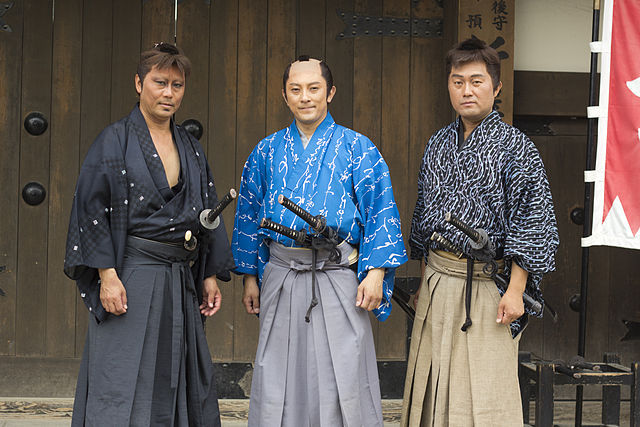Costume design is the creation of clothing for the overall appearance of a character or performer. Costume may refer to the style of dress particular to a nation, a class, or a period. In many cases, it may contribute to the fullness of the artistic, visual world which is unique to a particular theatrical or cinematic production. The most basic designs are produced to denote status, provide protection or modesty, or provide visual interest to a character. Costumes may be for a theater, cinema, musical performance, cosplay, parties, or other events. Costume design should not be confused with costume coordination which merely involves altering existing clothing, although both create stage clothes.
Costume design for Gianetta - The Gondoliers
Historical costumes of Le Cateau Cambrésis, France
Costume design drawings by Lisa Holmes for 2016 New Zealand Opera production of Mozart's Magic Flute
A woman creating in a costume workshop in Prague theater.
Costume is the distinctive style of dress or cosmetic of an individual or group that reflects class, gender, profession, ethnicity, nationality, activity or epoch. In short costume is a cultural visual of the people.
Actors in samurai costume at the Kyoto Eigamura film set
A captivating performance of Rajasthani folk dance, showcasing the vibrant cultural heritage of India. Image source: Wikimedia Commons.
A delightful glimpse into Kodomo Kabuki, the children's kabuki theater tradition in Nagahama, Japan. Young performers bring classic Japanese plays to life with their vibrant expressions and lively acting. Image source: lensonjapan.
A captivating moment from Kodomo Kabuki, the children's kabuki theater at the Hikiyama Matsuri in Nagahama, Japan. Here, a young performer embodies the role of Warrior Kumagai Jiro Naozane, showcasing the depth of talent and dedication among the young actors. Image source: lensonjapan.








